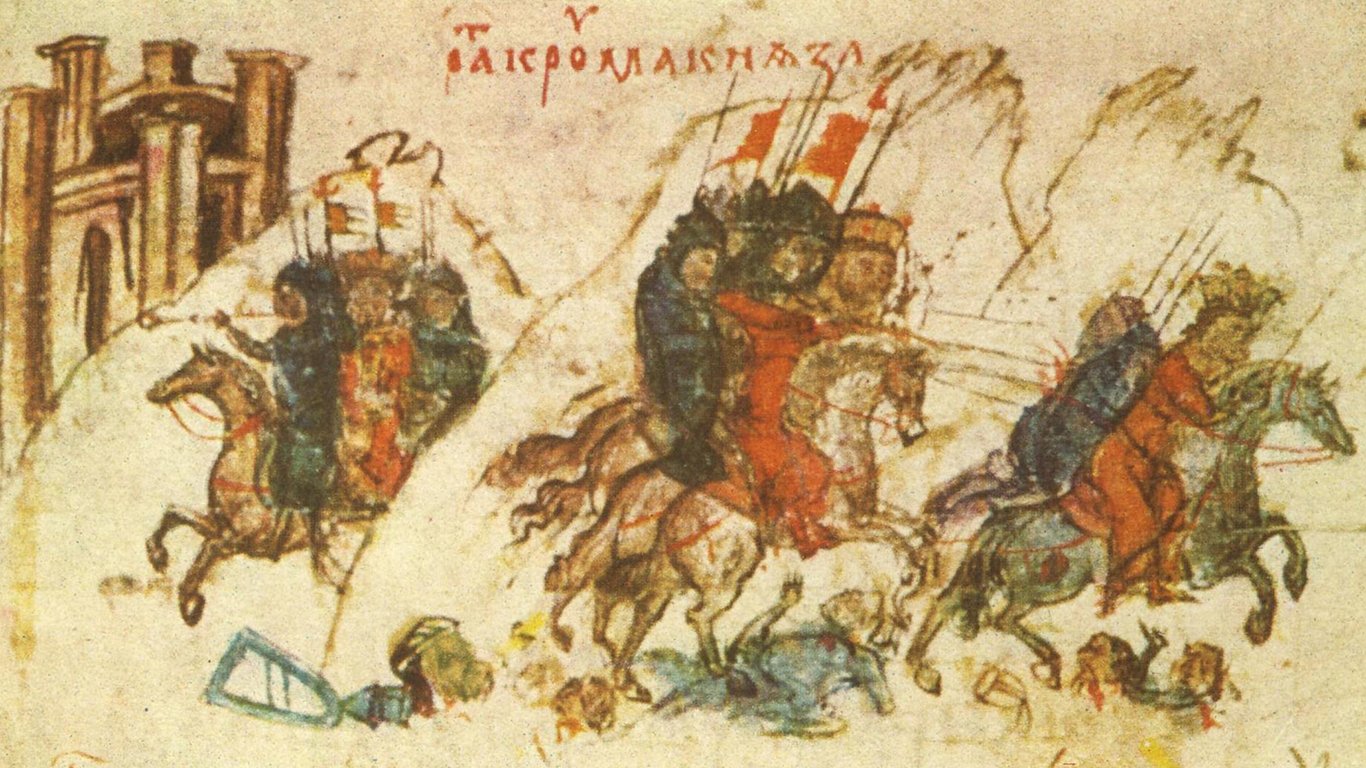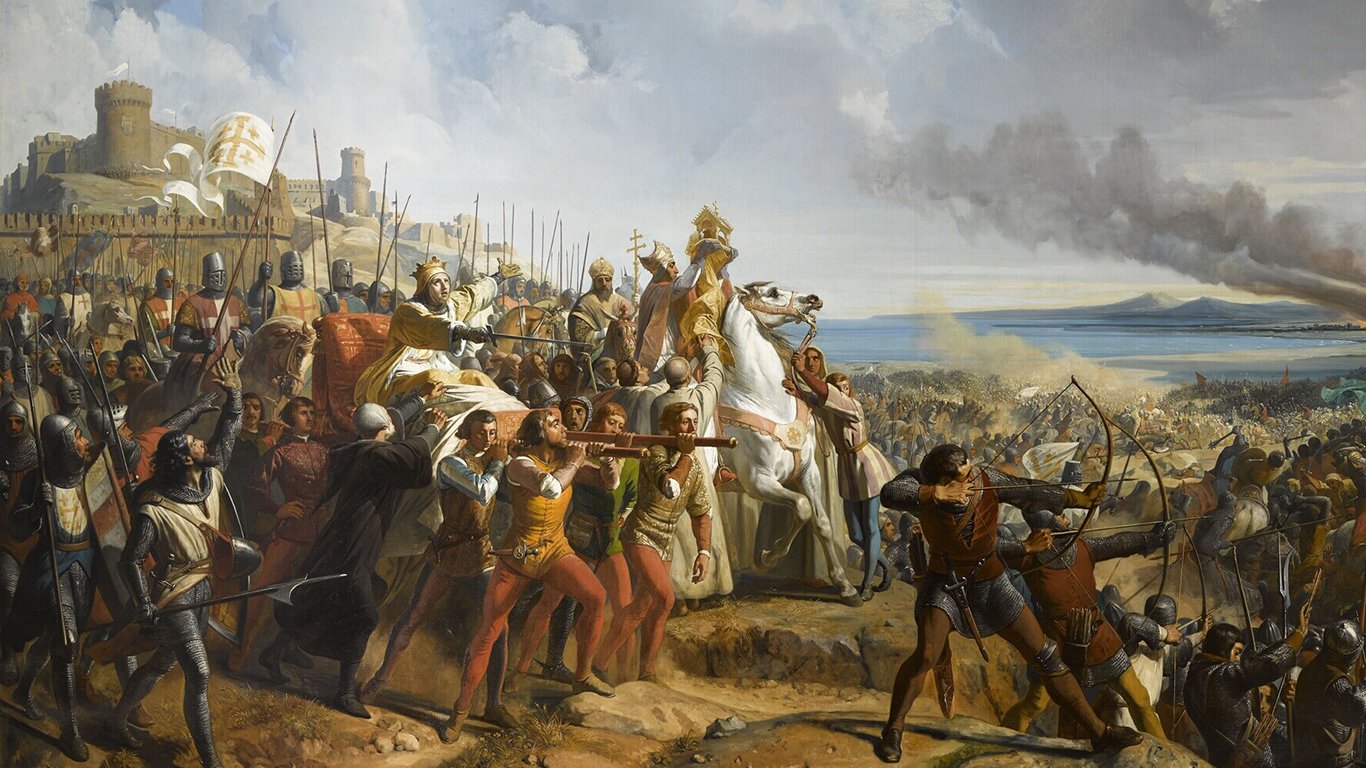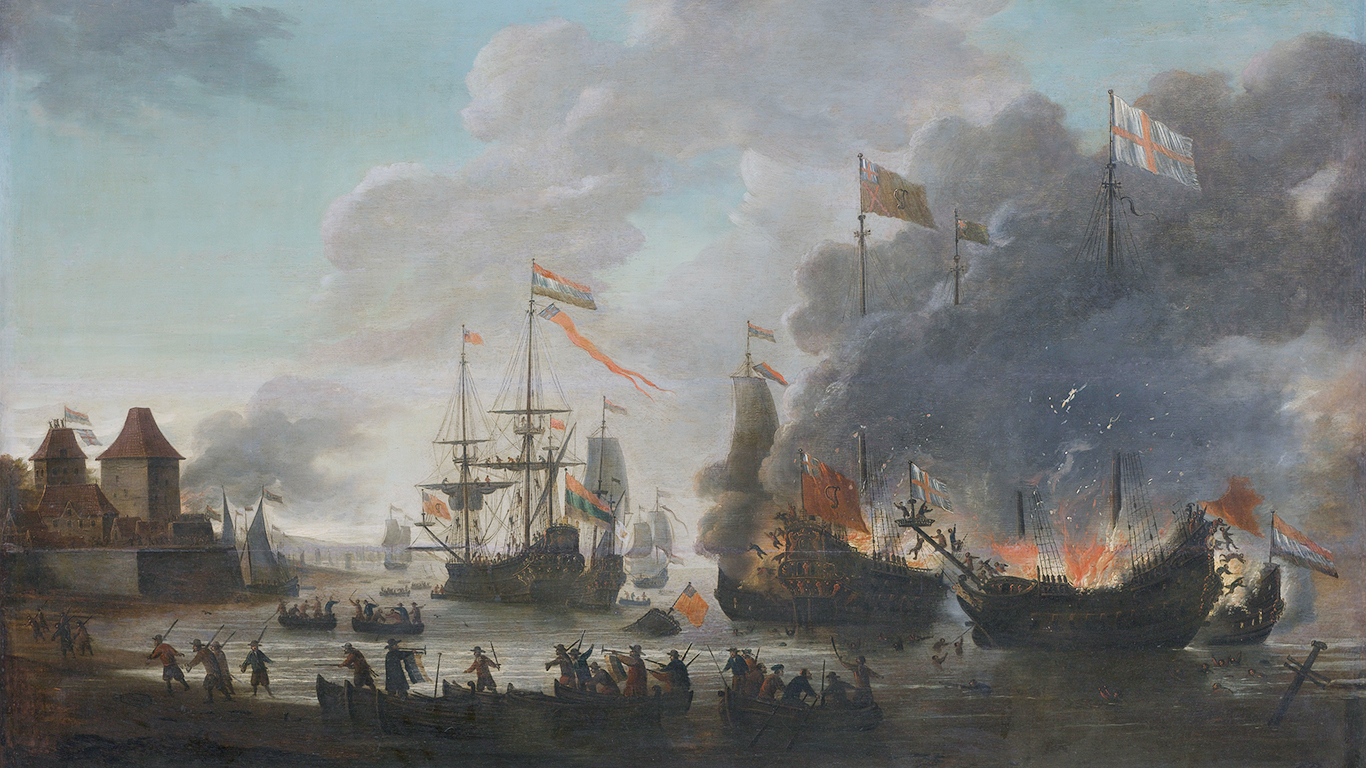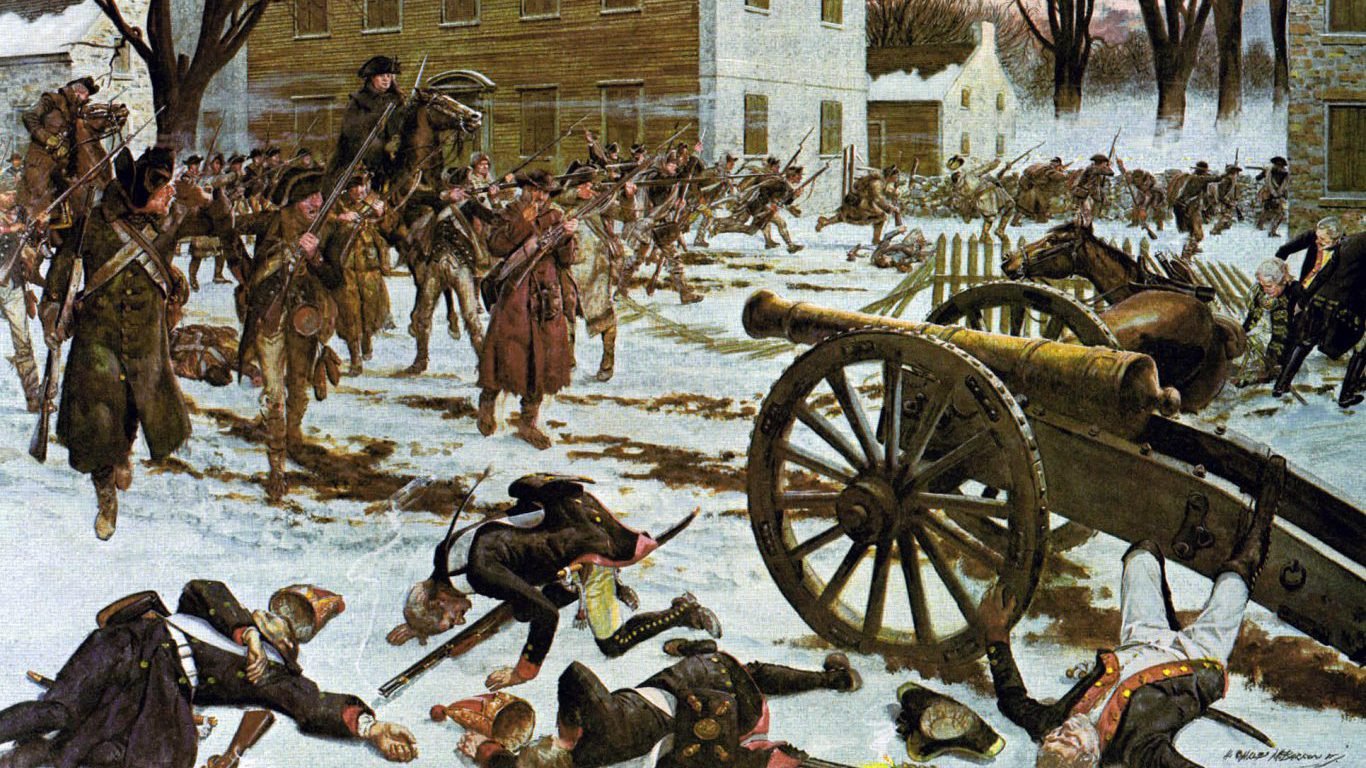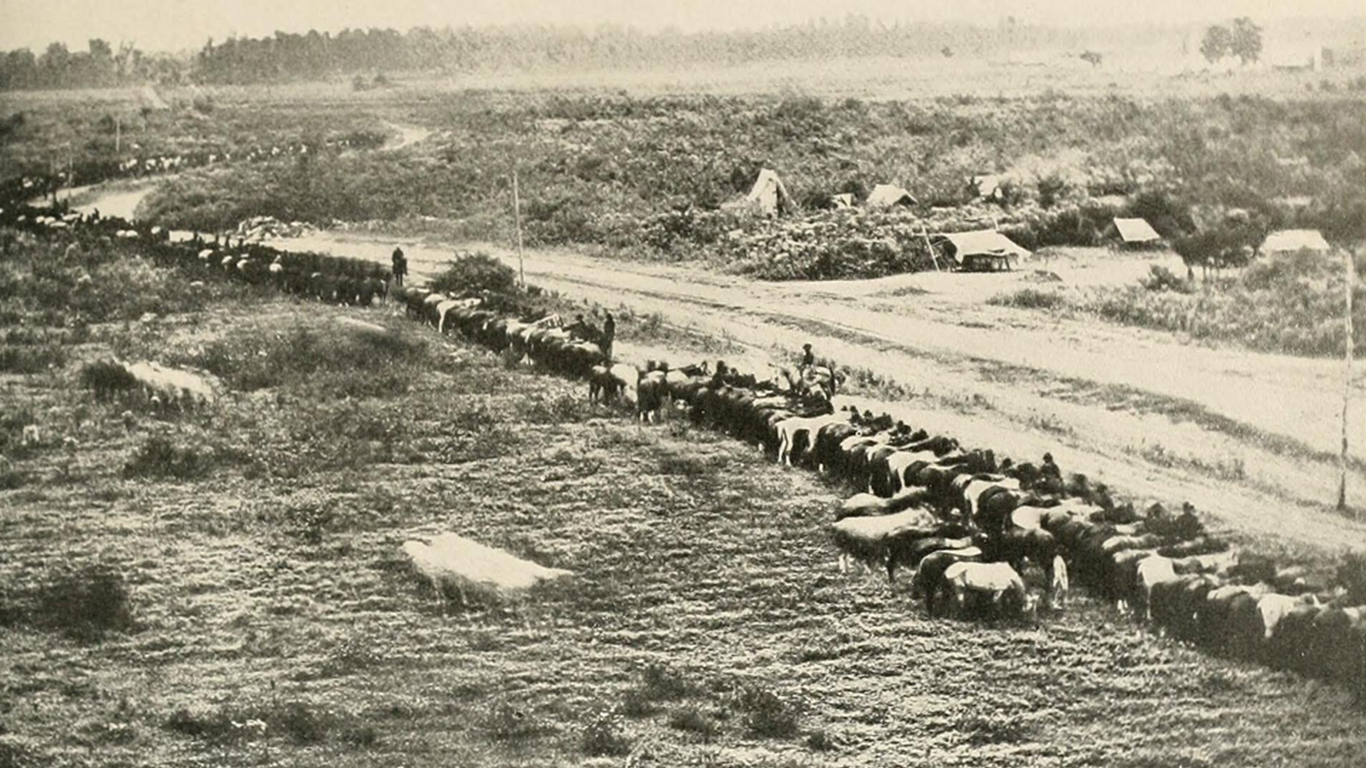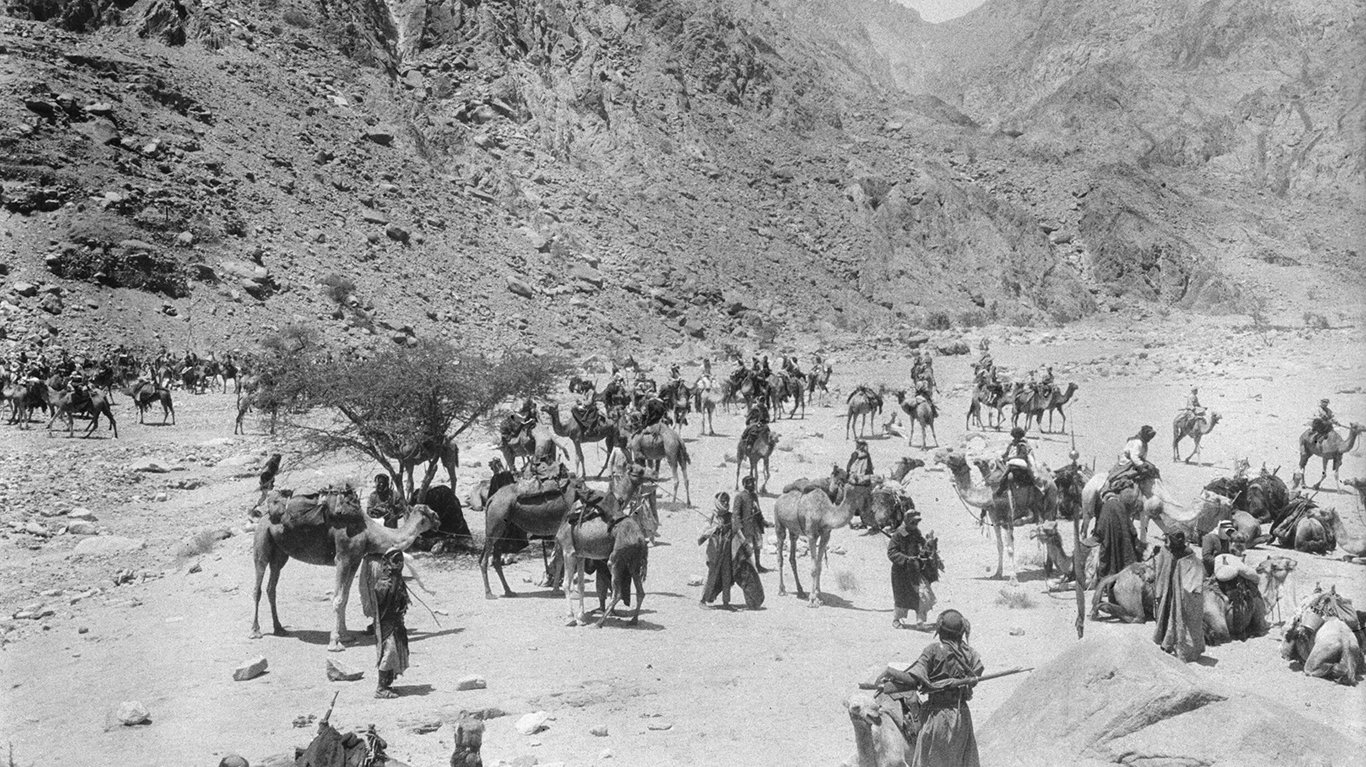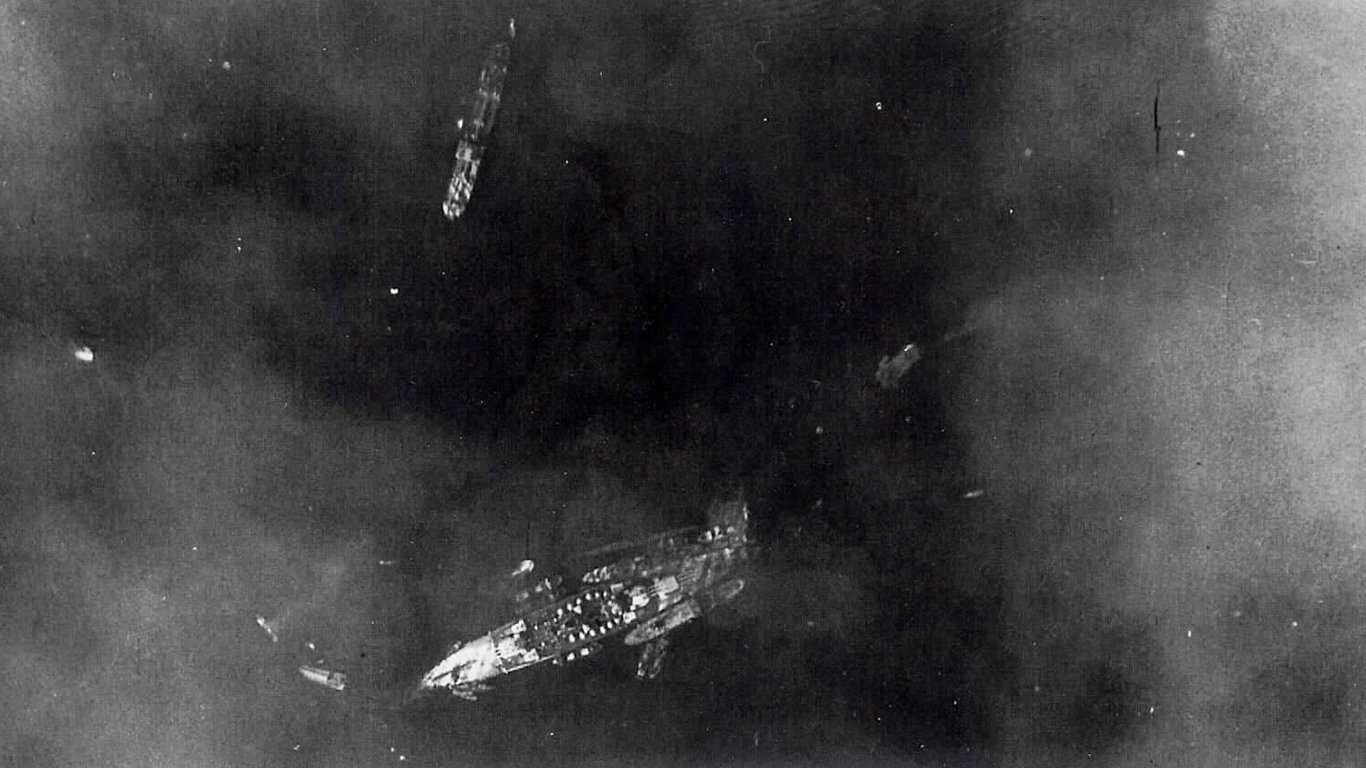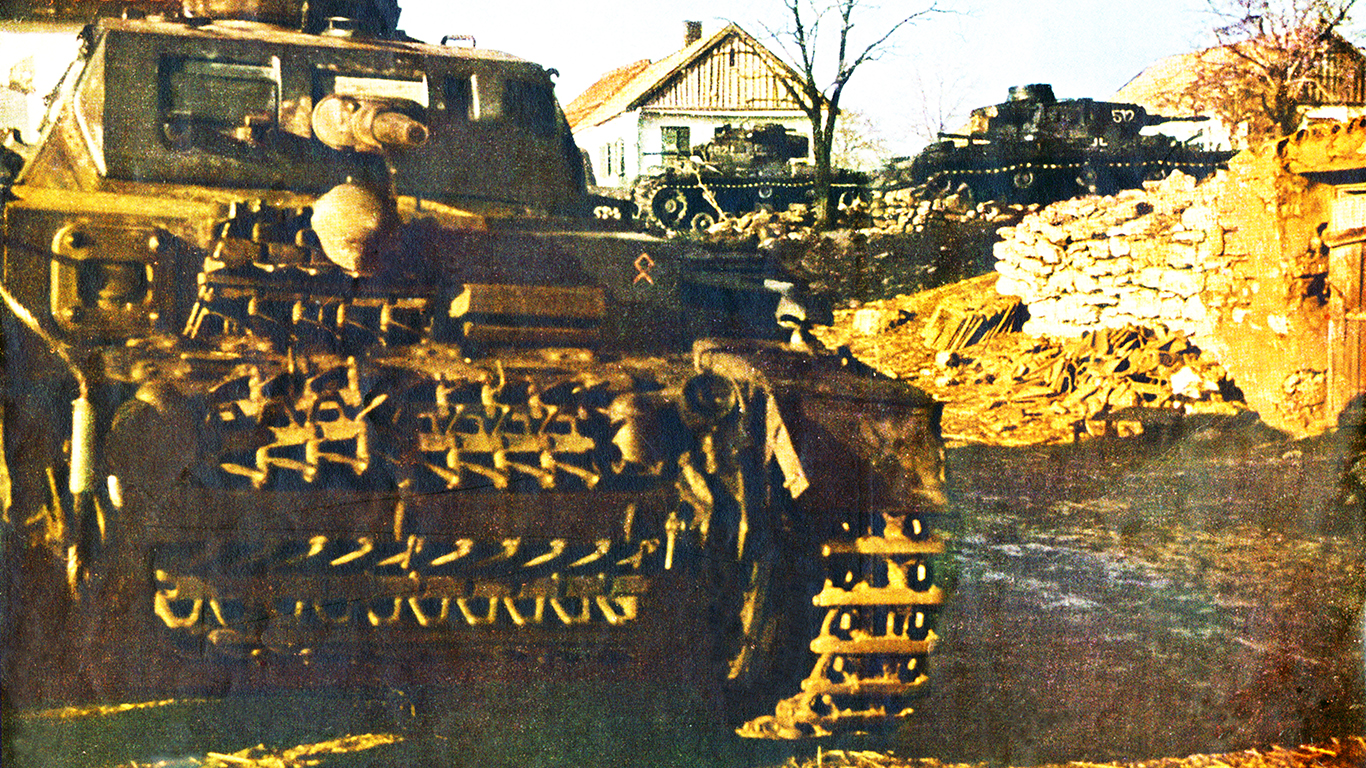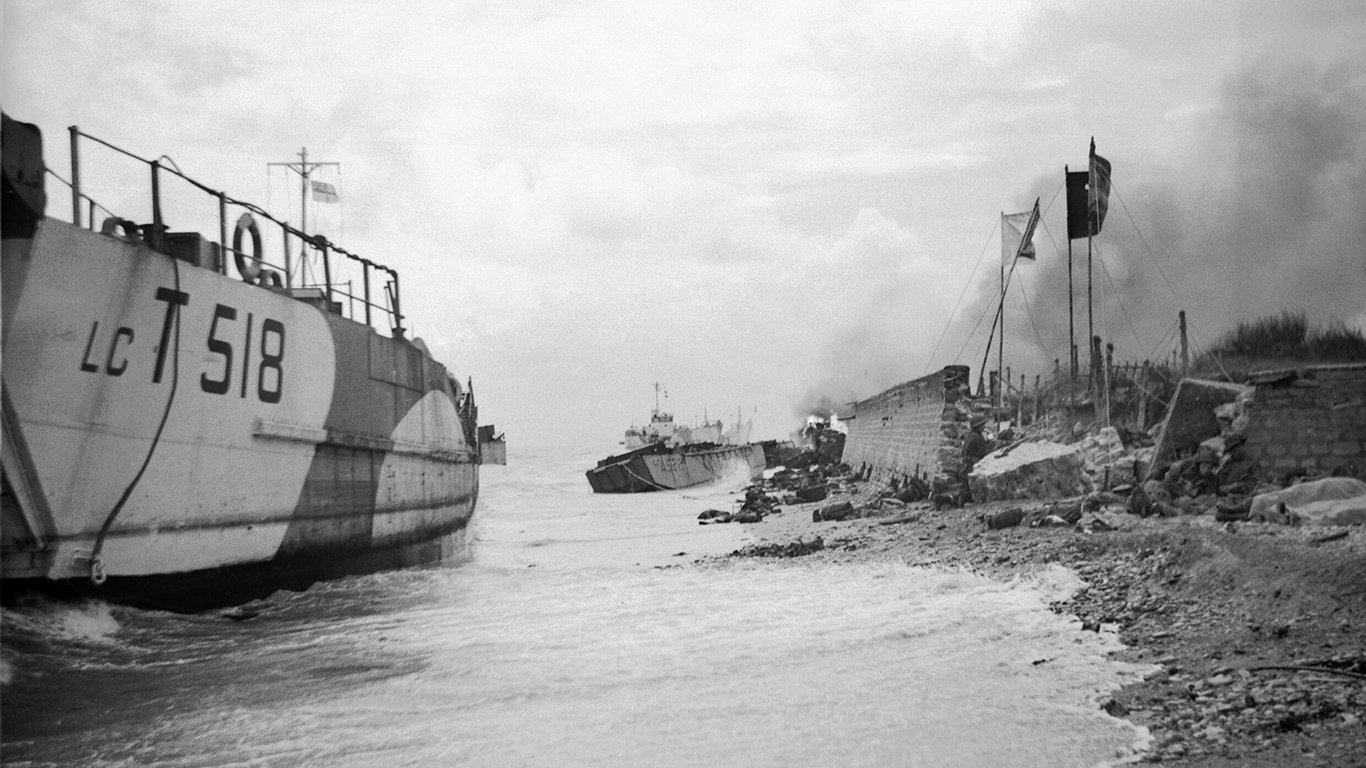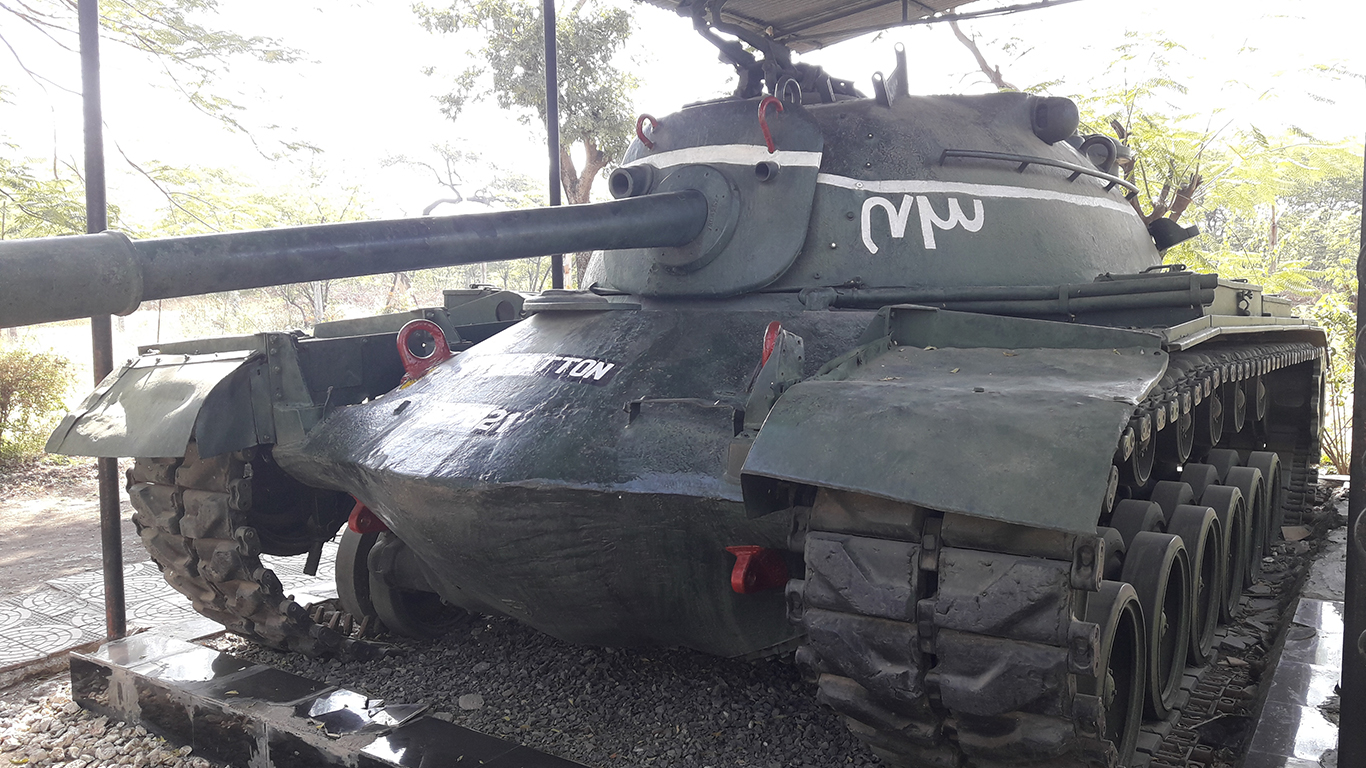Armchair historians can tell you about the biggest surprise attacks ever and the impacts they had. Some of the greatest traps, ambushes, and shocking assaults have altered history’s trajectory.
To identify the biggest surprise attacks in history, 24/7 Tempo reviewed sources like History Collection, War History Online, Military History Now, NPR, Historic UK, Historynet, and Britannica. These attacks were often of great historical importance, and in many cases turned the tide of war. While this list is not meant to be a definitive list of every important surprise attack in history, it includes many of the most famous and historically significant ones. The battles are listed in the order in which they occurred.
Many of the attacks that achieved surprise were executed by a nation or political movement that was underestimated by its enemy. The badly mauled Continental Army of General George Washington shocked Hessian mercenaries employed by the British Empire at Trenton, New Jersey, on Christmas Day, 1776, giving the new nation a needed morale jolt. Nearly 200 years later, America thought the communists were a spent force in South Vietnam, until the Tet Offensive in 1968 showed that the enemy had plenty of fight left, suggesting to the American public that the war was unwinnable.
Superior tactics allowed the Greeks to defeat the Persian Empire at the naval battle at Salamis in the fifth century BC; Hannibal’s Carthaginian army to rout the Romans at Lake Trasimene 200 years later; and General Robert E. Lee to vanquish a larger Union army at Chancellorsville in 1863.
Surprise attacks are always a gamble, and sometimes that roll of the dice doesn’t pay off. Japan stunned the U.S. Pacific fleet at Pearl Harbor on Dec. 7, 1941, and destroyed many battleships and planes. But the victory was incomplete. The attackers left the docks and refueling infrastructure intact, and American aircraft carriers were out at sea – and in April of the following year, American B-52 bombers rained destruction on Tokyo in response. (These are the cities destroyed by the U.S.A. in World War II.)

1. Battle of Megiddo
> Date: 1457 BC
> Location: Megiddo (present-day Israel)
> Combatants: Egypt, Canaanite rebels
Egyptian Pharaoh Thutmose III and his Egyptian forces faced rebellious Canaanites in an insurrection that centered around the city of Megiddo in what is present-day Israel. The area was a crucial trade route between Mesopotamia and Egypt.
Thutmose, advancing northward from Egypt, had three routes to choose between to reach Megiddo. The northern and southern routes were longer but considered safer. The central route was shorter but the passage featured narrow ravines and an army could be easily cut off. Thutmose gambled that the Canaanites would not defend the shorter route because of the geographical challenge to an advancing army. He proved correct, catching the Canaanites by surprise and ended the rebellion.

2. Battle of Salamis
> Date: Sept. 26-27, 480 BC
> Location: Island of Salamis
> Combatants: Greek city states, Persian Empire
Even though Greek and Persian naval warships were squaring off near the island of Salamis in the fifth century BC, it was the trap that the Greek city states set for the Persian navy that qualifies as one of history’s greatest surprise attacks. The Persian navy outnumbered the Greek ships by about two-to-one and Persian emperor Xerxes intended to trap the Greek ships in the narrow straits around Salamis.
The Greeks, led by their commander Themistocles, had other ideas. They concealed many of their ships in hidden bays and waited for a favorable wind to strike. When the Persian fleet entered the strait, the Greeks emerged and smashed into their flank, plowing into the less-maneuverable Persian ships with their heavier vessels. They sank about 300 Persian ships, while losing only 40 of their own. The naval defeat delayed Persian land offensives, giving the Greek city-states time to unite against Xerxes.
3. Battle of Lake Trasimene
> Date: June 24, 217 BC
> Location: Lake Trasimene, in the Umbria region of Italy
> Combatants: Rome, Carthage
Led by Hannibal, one of history’s greatest generals, a Carthaginian army marched south toward Lake Trasimene (now Lake Trasimeno), in the Umbria region of Italy, defeating the Roman legions that faced him in a series of battles during the Second Punic War. One his greatest victories, and one history’s most significant tactical triumphs, was about to occur.
Hannibal laid a trap for a Roman army of 30,000 led by General Gaius Flaminius by using smaller units of his forces to attack the Romans and retreat. The Romans pursued the invaders down a narrow road with Lake Trasimene on one side and a forest on the other. A Carthaginian contingent blocked one side of the road and Flaminius prepared for battle. The Carthaginians emerged from the fog-shrouded forest and attacked the shocked Roman troops. Half of the Roman legions were killed and the other half taken prisoner.

4. Battle of Teutoburg Forest
> Date: September, 9
> Location: Kalkriese (present-day Germany)
> Combatants: Rome, Germanic tribes
The destruction of three Roman legions in the Teutoburg Forest was one of the most shocking defeats in the history of the Roman Empire. In the first century, Rome was trying to pacify the regions of what is now Germany. The empire entrusted commander Publius Quinctilius Varus with subduing the rebellion.
Arminius, a German vassal who was Roman-educated and even attained the rank of a knight, advised Varus that a rebellion was brewing in the western section of the Germanic territory. It was a trap. As the legions marched through the narrow paths in the deeply forested area, they were set upon by an ever-increasing number of Germanic tribes. The legions were wiped out and Varus committed suicide.
The stunning defeat halted the advance of the Roman Empire northward, and led to the distinct cultural differences between northern and southern Europe that persist to this day.

5. Sacking of Rome
> Date: Aug. 24, 410
> Location: Rome
> Combatants: Rome, Visigoths
With Rome’s military glory all but a memory, Visigoth King Alaric I did something no leader had done until that time. He and his army, aided by rebellious slaves, breached the city gates and sacked Rome. The city that Alaric’s army pillaged was suffering from famine and starvation. The Visigoths spared churches (many of the invaders were Christian), but destroyed pagan temples and government buildings.
Though the empire would continue, the plundering of Rome was a psychological and political blow to the once-invincible empire.
6. Battle of Pliska/Värbitsa Pass
> Date: July 26, 811
> Location: Bulgarian countryside
> Combatants: Byzantine Empire, Bulgaria
Byzantine Emperor Nikephoros, tired of what he considered troublesome Bulgarian forces under their warlord Krum, marched into Bulgaria with 80,000 troops. Krum asked for peace but Nikephoros rejected the overtures and destroyed the Bulgarian capital of Pliska.
The Bulgarians plotted to ambush Nikephoros. As the Byzantine army marched south through the Värbitsa Pass, a mountain passageway about 3,000 feet above sea level in the Balkan Mountains, the Bulgarians set traps and built walls to impede their advance, which was eventually blocked by a wooden structure. Other Bulgarians blocked the exit back to the valley. The Bulgarians killed almost the entire army, including Nikephoros.
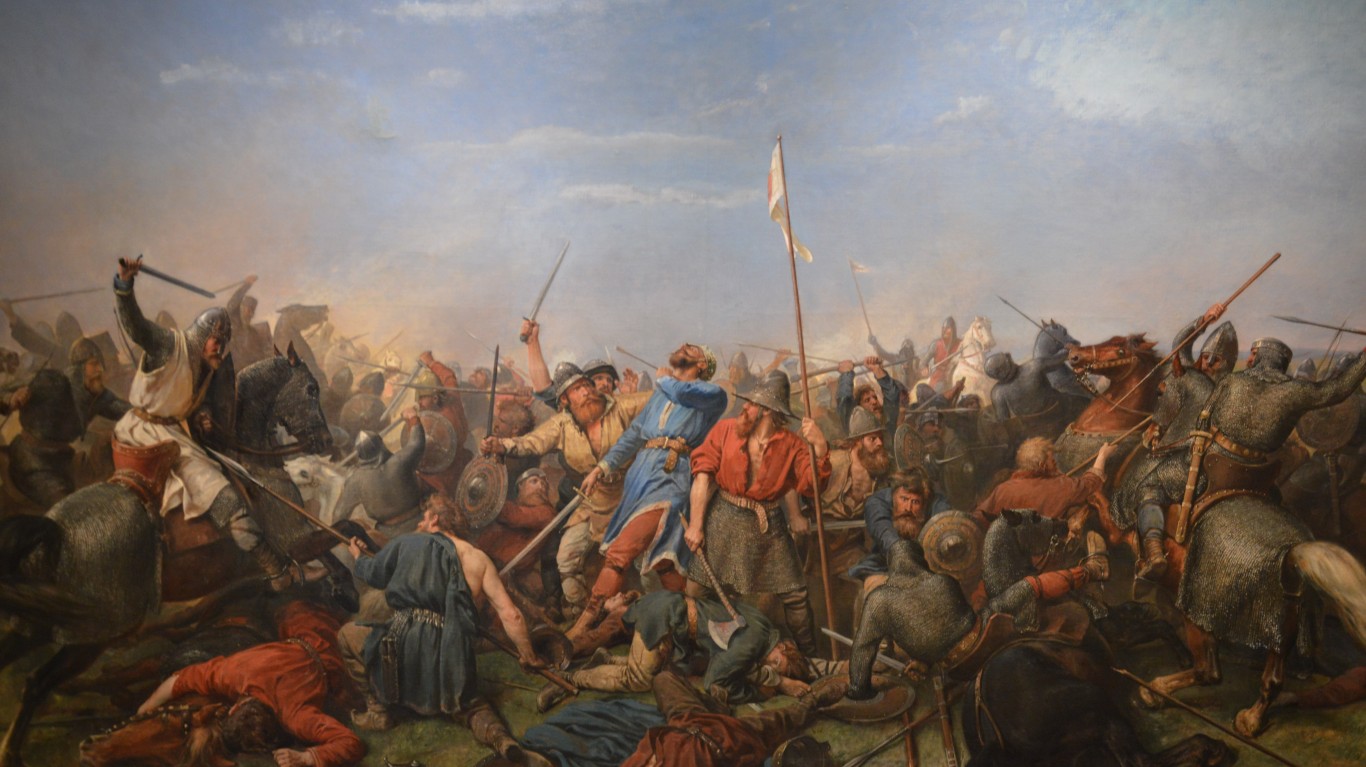
7. Battle of Stamford Bridge
> Date: Sept. 25, 1066
> Location: Stamford Bridge, England
> Combatants: Anglo-Saxons, Norsemen
Before he lost the Battle of Hastings to William the Conqueror, King Harold, the last Anglo-Saxon king of England, thwarted an invasion from Norsemen. As Harold awaited the Norman invasion from the south, he got word that Norsemen had landed an army farther north. Harold had his army of 15,000 march 200 miles to Stamford Bridge. He completely surprised the Norsemen, who were unarmed when Harold’s troops arrived, and thousands were killed. Those that survived returned home in disgrace.
Harold’s victory was short-lived. Several weeks later, he was defeated by William the Conqueror, who claimed the English throne.
8. Battle of Montgisard
> Date: Nov. 25, 1177
> Location: Southeast of Jerusalem
> Combatants: Kingdom of Jerusalem, Ayyubid dynasty
The Battle of Montgisard was won by 16-year-old King Baldwin IV, ruler of the Christian Kingdom of Jerusalem, who overcame the forces of Saladin despite being afflicted with leprosy.
Saladin, the first Sultan of Egypt and Syria and founder of the Ayyubid dynasty, had amassed an army of 26,000 that marched toward Jerusalem. Baldwin planned to stop him even though his forces, which included the Knights Templar, were greatly outnumbered. Enroute to Jerusalem, Saladin allowed his troops to disperse and raid villages. That was a mistake. Saladin, underestimating Baldwin, didn’t think the young king would attack with inferior numbers, but in the early morning hours of Nov. 25, they set upon Saladin’s main force and defeated them. Saladin himself escaped to Egypt with just one-tenth of his army.
9. Battle of Medway
> Date: June 9, 1667
> Location: River Medway, England
> Combatants: England, Netherlands
The English and Dutch battled for maritime supremacy in the 17th century. In 1667, the Dutch were able to inflict a catastrophic blow to the Royal Navy in English waters in the Second Anglo-Dutch War.
Utilizing a plan designed by political leader Johann de Witt, the Dutch seized the English seaport of Sheerness, at the mouth of the River Thames. The Dutch fleet, aided by river pilots who had defected from the British, sailed through the difficult River Medway, then destroyed a protective iron chain that extended across the waterway. The Dutch then wrecked 13 Royal Navy ships anchored at the ports of Gillingham and Chatham.
England had been reeling from a plague and the Great Fire of London several years earlier. Those two disastrous events led to budget cuts that had left the English vessels vulnerable. To add insult to injury, the Dutch made off with two English ships, including HMS Royal Charles, the Royal Navy flagship.
10. Battle of Trenton
> Date: Dec. 25, 1776
> Location: Trenton, New Jersey
> Combatants: American colonies, England
By Christmas 1776, there was little to cheer about among American colonial forces fighting for independence from Great Britain. A series of defeats on Long Island and in Manhattan and Fort Lee, New Jersey, sent the colonials into a retreat south and into Pennsylvania.
General George Washington hatched a bold plan to attack Great Britain’s Hessian mercenaries garrisoned in Trenton. On Christmas night, the Continental Army crossed the Delaware River north of the city and attacked. After a brief battle, all of the Hessian troops were killed or captured. The outcome lifted the morale of the army and the new nation, though final victory would still be five years away.
11. Grierson’s Raid
> Date: April 17, 1863
> Location: Mississippi
> Combatants: Union, Confederacy
The cavalry legends of the Civil War mostly sprang from the ranks of the Confederacy – men like J.E.B. Stuart and Nathan Bedford Forrest. But a daring raid by Union Colonel Benjamin Grierson earned him recognition and proved instrumental in General Ulysses S. Grant’s successful Vicksburg Campaign in the spring of 1863.
Grierson, a music teacher who disdained horses, led 1,700 horsemen southward from La Grange, Tennessee, deep into Mississippi and behind Confederate lines. They destroyed bridges, tore up railroad tracks, wrecked installations and facilities, and wreaked havoc throughout Mississippi. Their exploits also raised the morale of Union cavalrymen, who until Grierson’s exploits had been outclassed by the rebel horsemen.

12. Battle of Chancellorsville
> Date: May 2-4, 1863
> Location: Chancellorsville, Virginia
> Combatants: Union, Confederacy
Among the many stunning victories authored by General Robert E. Lee during the Civil War, the triumph at Chancellorsville might have been his greatest. Though outnumbered two-to-one by Union troops led by Major General Joseph Hooker, Lee and Lieutenant General Thomas J. “Stonewall” Jackson flouted military convention by dividing their troops into two units to attack the Union army located just west of Chancellorsville, Virginia.
Jackson took 30,000 men, about two-thirds of the Confederate strength, on a 12-mile march on back roads and narrow trails intending to reach the right flank of federal infantry. Lee would use the remaining 14,000 troops to divert Hooker’s attention. Union scouts spotted Jackson’s soldiers hiding in the dense forest but when no attack came, Hooker figured Jackson’s troops had retreated. As Union soldiers began eating dinner in the early evening of May 2, Jackson’s men attacked, and the troops fled in a panic. This led to one of the South’s greatest victories, but it was a costly one. Jackson was shot by friendly fire and died a week later.
13. Battle of Aqaba
> Date: July 6, 1917
> Location: Aqaba, Jordan
> Combatants: Arabs, Ottoman Empire
About 5,000 Arab cavalry led by Sherif Nasir and Auda abu Tayi and advised by English Captain T.E. Lawrence crossed the unforgiving Nefud desert to surprise Ottoman Empire troops in Aqaba, Jordan, during WWI and captured the port city on the Red Sea. The seizure of Aqaba also relieved pressure on British forces in Palestine and created a route to takng the great prizes of Jerusalem and Damascus.
The astonishing victory helped forge the legend of Lawrence, whose derring do would capture the British public’s imagination. He would eventually be known as “Lawrence of Arabia” and would be lionized in newspapers, books, and movies.

Rows of small posts in the snow to prevent the advance of German tanks and troops, ca. 1940. (Photo by © Hulton-Deutsch Collection/CORBIS/Corbis via Getty Images)
14. Attack in the Ardennes Forest
> Date: May 16, 1940
> Location: Ardennes, Belgium
> Combatants: Allies, Axis Powers
Even though France emerged victorious over Germany in WWI, the French still feared an attack from their ancient enemy in the following decades. Between the world wars, the French built an extensive defensive network of forts, obstacles, and fortifications called the Maginot Line on the border with Germany. If war came, and Germany attacked through Belgium, French war plans called for the French army to move into Belgium and halt a German attack there.
The Germans had other ideas. They invaded the Low Countries on May 10, 1940, and six days later, mechanized armor burst through the Ardennes Forest in southern Belgium and Luxembourg, believed to be impassable for tanks, and smashed through the thinly held line there. The Germans cut off Allied troops in northern France and Belgium and six weeks later France capitulated, stunning the world.
15. Operation Judgment
> Date: Nov. 11-12, 1940
> Location: Taranto, Italy
> Combatants: Allies, Axis Powers
Operation Judgment was an aerial attack conducted by Great Britain against the Italian fleet anchored at the well-fortified naval base in Taranto, on the southeastern coast of Italy during WWII. It was the first time planes flown from aircraft carriers attacked heavily defended warships.
The British launched 21 obsolete Swordfish biplane torpedo bombers from the aircraft carrier HMS Illustrious to hit the Italian fleet, seen as a threat to the Royal Navy in the Mediterranean Sea. The Italians were caught entirely off guard by the aerial attacks and lost half of their capital ships from air-dropped torpedoes. The result of the attack altered the balance of power in the Mediterranean in favor of Great Britain. Other nations, including Japan, took notice of the success of the attack.
16. Operation Barbarossa
> Date: June 22, 1941
> Location: Soviet Union
> Combatants: Axis Powers, Soviet Union
Even though Germany and the Soviet Union had signed a non-aggression pact in 1939, Nazi leader Adolf Hitler despised communism and coveted the massive Russian land mass to expand his empire. On June 22, 1941, Germany launched Operation Barbarossa (named after a 12th-century German king) with three million troops, the greatest land invasion in history.
At first Soviet dictator Joseph Stalin refused to believe the invasion was taking place. The Soviet army, weakened by Stalin’s purges in the 1930s, collapsed everywhere. In the war’s first six months, the Soviets suffered more than six million military casualties, and millions more civilians died. Ultimately the invasion stalled after a failed assault on Moscow during Russia’s harsh winter and the superior Russian numbers and supplies eventually overcame the Nazis.
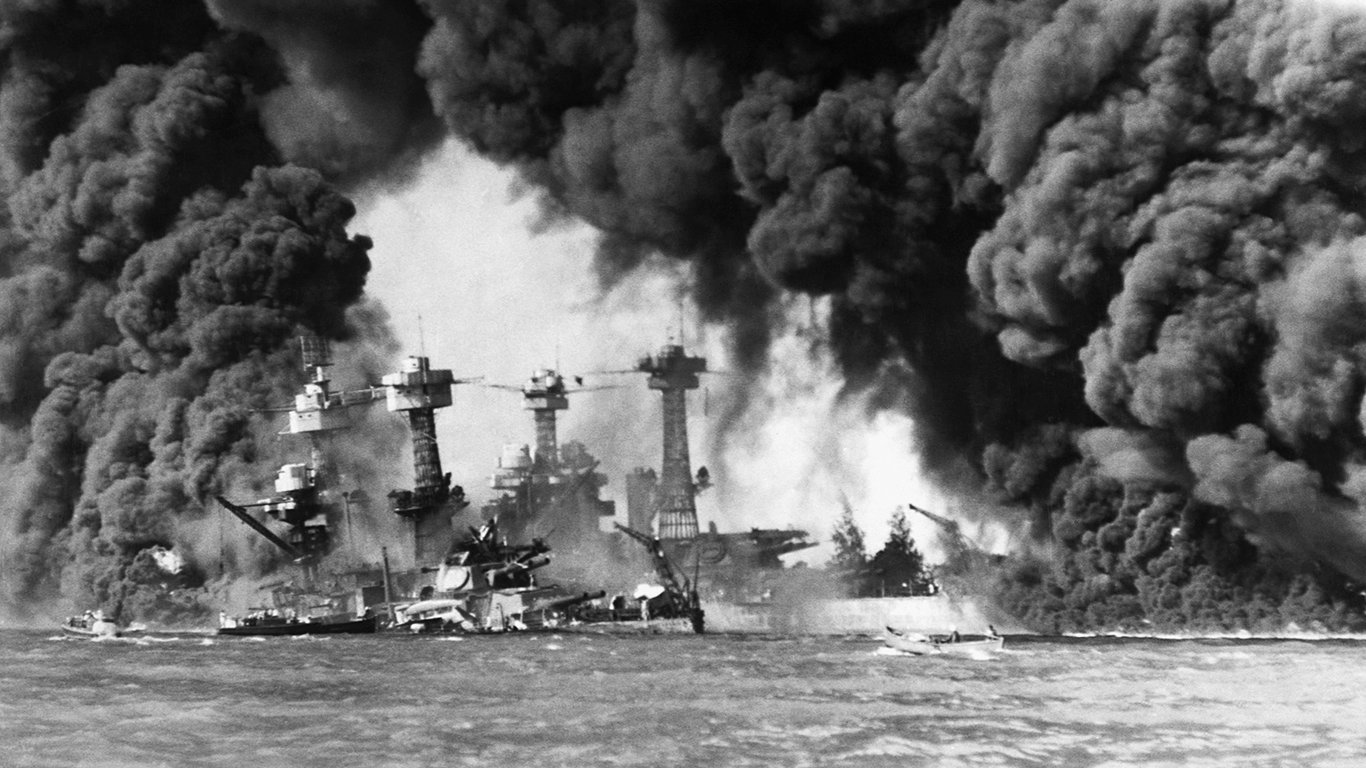
17. Pearl Harbor
> Date: Dec. 7, 1941
> Location: Pearl Harbor, Hawaii
> Combatants: U.S., Japan
Tensions grew between the United States and Japan during the 1930s as the Japanese extended their empire into China, and were raised higher when the U.S. imposed an oil embargo on Japan. The island empire lacked the resources it needed to expand and planned to invade the oil-rich areas in the South Pacific. But it needed to eliminate the U.S. Pacific fleet to do so.
On Sunday morning, Dec. 7, 1941, Japanese airplanes laden with bombs and torpedoes took off from aircraft carriers 200 miles north of Hawaii intent on destroying U.S. warships anchored at Pearl Harbor. They sank four battleships and damaged four others. They also damaged cruisers and destroyers. About 160 airplanes were destroyed. More than 2,400 Americans were killed. The United States was now in WWII.
It was a devastating blow, but not fatal. Much of the infrastructure such as docks, power stations, and oil storage facilities was untouched. As luck would have it, there were no American aircraft carriers in Pearl Harbor that day. The carriers would soon play an important role in turning the tide of war in the Pacific.
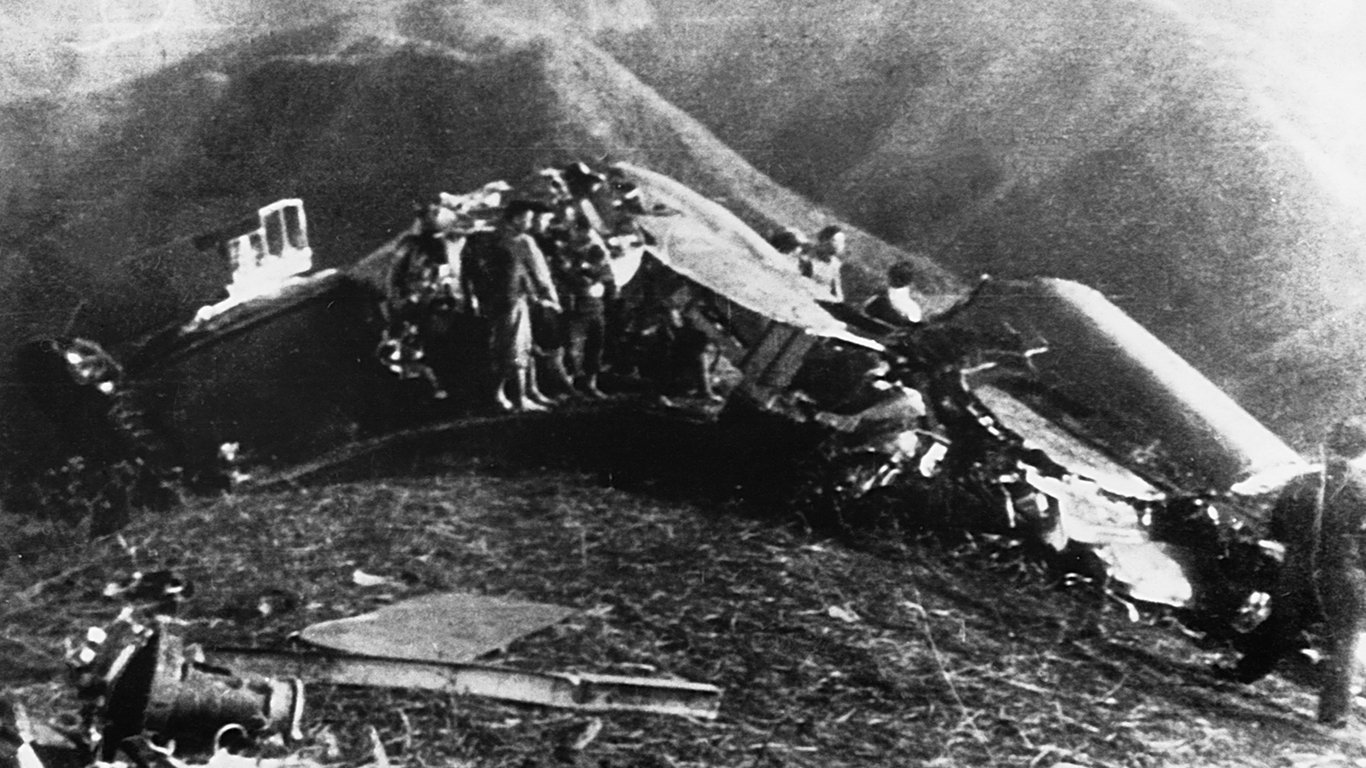
18. Doolittle Raid
> Date: Apr. 18, 1942
> Location: Tokyo, Japan
> Combatants: U.S., Japan
After the Japanese attack on Pearl Harbor, President Franklin D. Roosevelt wanted Japan bombed as soon as possible to boost public morale. The problem was America had no airbases within bombing range of Japan. The solution was to use a floating airbase, an aircraft carrier, to carry B-25 bombers and get close enough to Japan without being spotted. The bombers were commanded by U.S. Army Air Corps Lieutenant Colonel James Doolittle.
On April 18, 1942, 16 B-25s, carrying incendiary and conventional bombs, took off from the USS Hornet 750 miles east of Japan and attacked Tokyo, bombing military and industrial targets. None of the attackers were shot down. 15 bombers crash-landed in China, while the 16th reached Vladivostok in Russia.
The physical damage in Tokyo was slight but the psychological impact was huge. American morale soared while the stunned Japanese couldn’t believe their homeland had been attacked.
19. D-Day (the Normandy Invasion)
> Date: June 6, 1944
> Location: Normandy, France
> Combatants: Allies, Germany
Officially called Operation Neptune, the Allied invasion of the region of Normandy in northwestern France via amphibious landings on its beaches (with air support) – commonly called “D-Day” – was a decisive first step in the liberation of France and eventually the rest of Western Europe.
The Germans anticipated the invasion, but a complicated plan of deception launched by the British war department, dubbed Operation Bodyguard, misled them about both the date and the site of the Allied attack. When some 24,000 American, Canadian, and British troops landed along a 50-mile stretch of the coastline just after midnight on the 6th, they met an unprepared German force weakened by the recent transfer of men and equipment from the Western to the Eastern Front.
Nonetheless, Allied casualties were heavy, and it took the invading forces and those who followed them weeks to accomplish their goals in the region. The long struggle notwithstanding, the invasion is considered to have marked the beginnings of the Allied victory on the Western Front, heavily impacting the Nazi war machine.
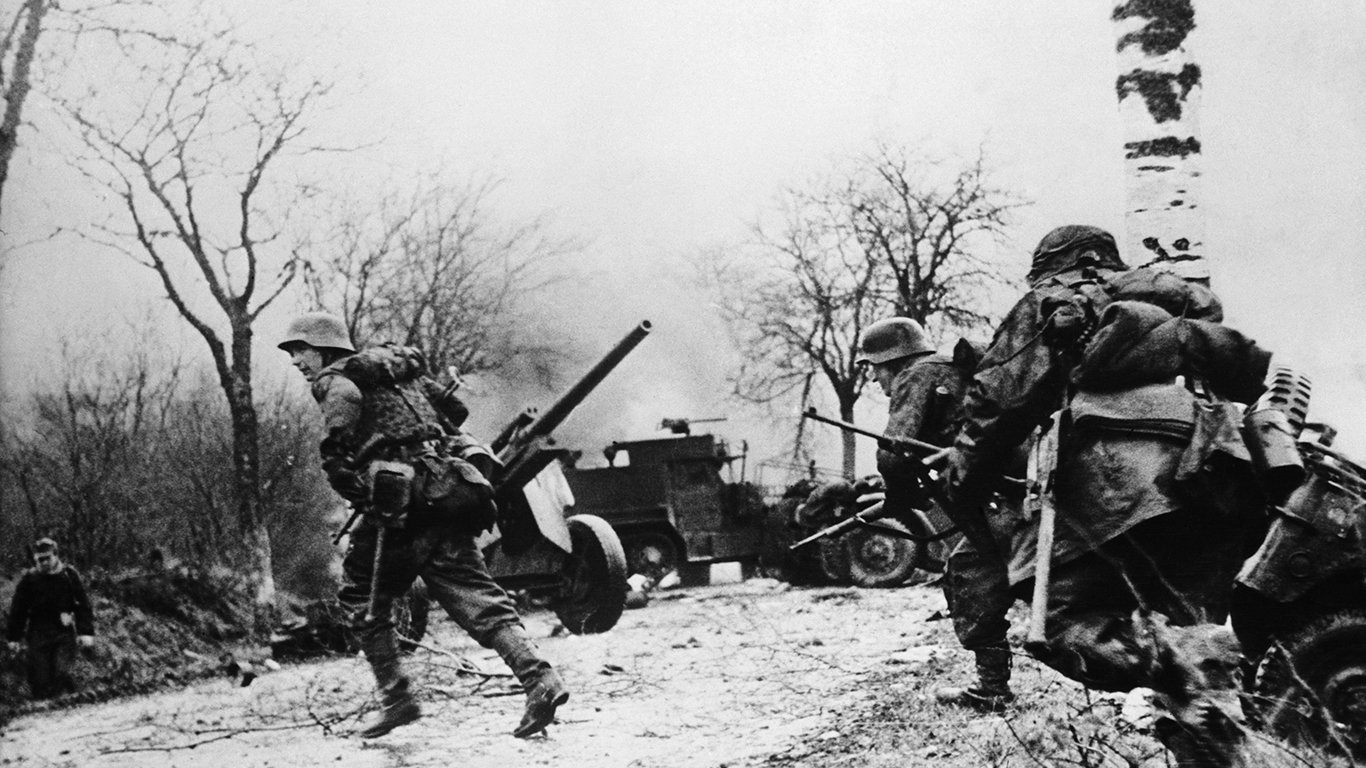
20. Battle of the Bulge
> Date: Dec. 16, 1944-Jan. 25, 1945
> Location: Ardennes, Belgium
> Combatants: Allies, Germany
By the end of 1944, the Western Allies stood on the border of Germany, poised to deliver the final blow on the Nazi regime. German dictator Adolf Hitler concocted an offensive plan in which the German army would slash through a weak part of the Allied lines near the Ardennes Forest – where the Germans had launched their surprise attack on France four years earlier – split the Americans and British armies and force the Western Allies to make a separate peace from the Soviet Union, which Hitler regarded as the real enemy.
On Dec. 16, 1944, 30 German divisions smashed through thinly held positions manned by inexperienced American troops. The overcast weather conditions nullified Allied air superiority and the Germans drove west, forming a bulge in the Allied line. Once weather conditions improved, Allied air forces struck, and General George Patton’s Third Army wheeled northward to relieve beleaguered troops in Belgium. Hitler’s gamble had failed and likely accelerated the end of the war. The U.S. suffered 100,000 killed, wounded or missing action, America’s bloodiest battle in WWII.
21. Battle of Asal Uttar
> Date: Sept. 10, 1965
> Location: Asal Uttar, India
> Combatants: India, Pakistan
India and Pakistan have been bitter enemies since both became independent in 1947. A bone of contention between the two nations has been the area of Kashmir. Pakistan, bolstered by U.S. military aid that included Patton tanks, and with India still smarting from a military defeat at the hands of China, saw its chance to take Kashmir in 1965.
Pakistan invaded the region on Sept. 8, 1965, and captured a village about three miles over the internationally recognized border. Indian troops drew mechanized units of the Pakistani army into a trap and were ambushed. One hundred Pakistani tanks were either destroyed or captured versus just 10 Indian tanks. It was one of the largest tank battles since WWII.
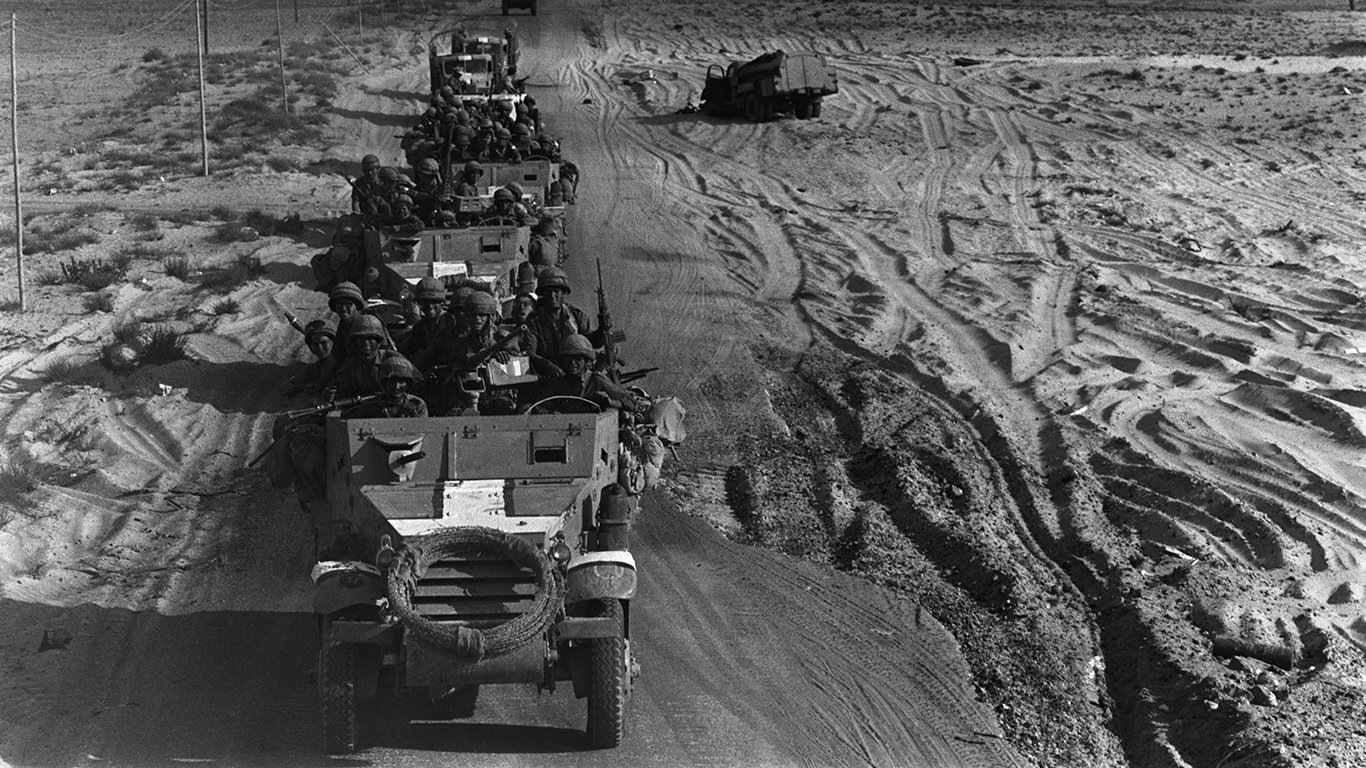
22. Operation Focus
> Date: June 5, 1967
> Location: Egypt, Syria, Jordan
> Combatants: Israel, coalition of Egypt, Syria, and Jordan
With diplomatic negotiations with the neighboring Arab nations going nowhere and fearful of a coordinated invasion, Israel decided to strike first. On the morning of June 5, 1967, Israel put in motion Operation Focus. The Jewish nation launched a pre-emptive strike on the Egyptian air force, destroying 500 planes on the ground and rendering the airstrips unusable. The Israeli air force took out the Jordanian and Syrian combat aircraft over the next five days. Israel’s victory in the Six-Day War shocked the world, but did not settle differences with its Arab neighbors, who six years later would attack Israel.
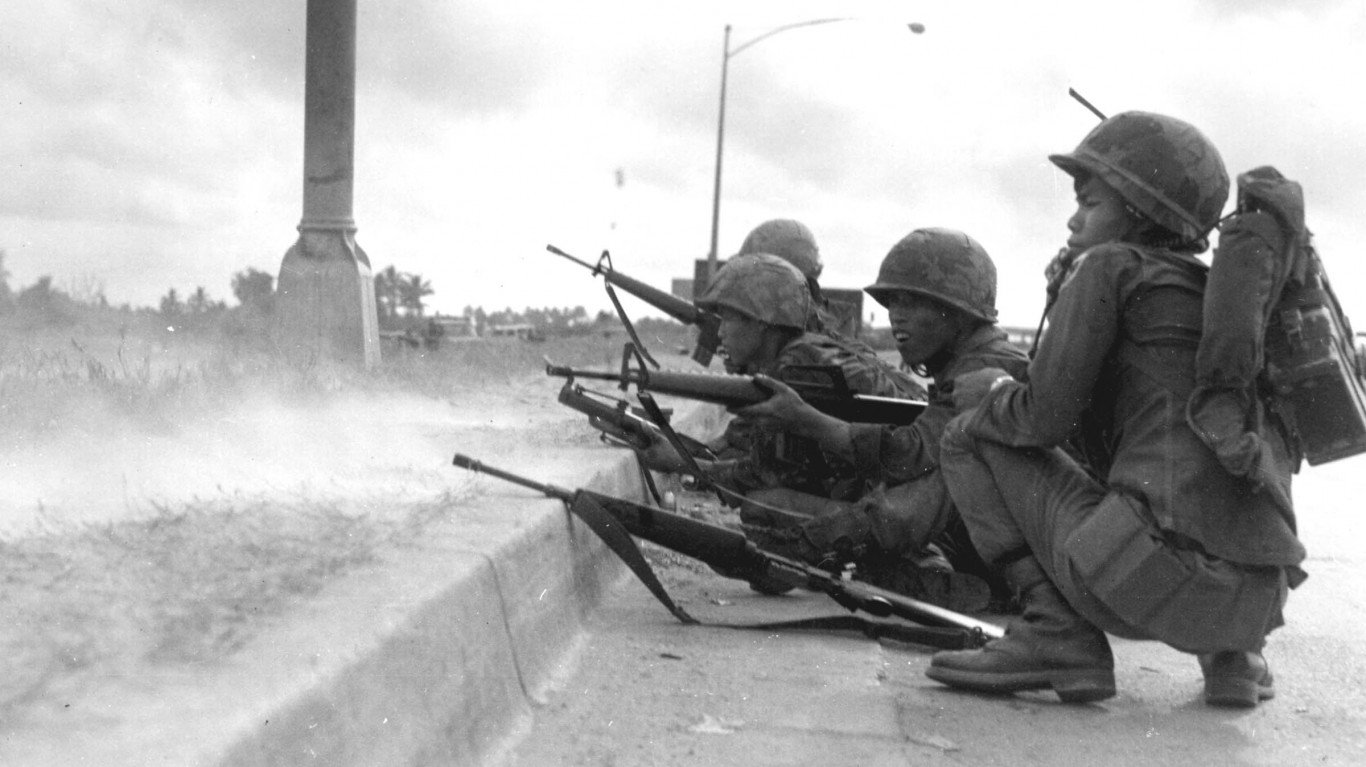
23. Tet Offensive
> Date: Jan. 30, 1968
> Location: Coordinated assaults in South Vietnam
> Combatants: U.S. and South Vietnam, Viet Cong
By the end of 1967, the United States and its South Vietnamese ally were convinced that final victory over North Vietnam and the Viet Cong was near. It was a colossal miscalculation. The North Vietnamese and Viet Cong prepared an assault set to begin on the Vietnamese New Year.
They launched surprise mortar and rocket attacks on military installations in five provincial capitals, including Saigon, in what became known as the Tet Offensive (“Tet” being a shortened version of the name of Vietnam’s Lunar New Year festival). One Viet Cong suicide team even assaulted the U.S. embassy. It took the Americans and their allies eight months to throw back the insurgents, who lost 100,000 troops.
America might have won on the battlefield, but after that point, public opinion in the U.S. turned decisively against the war, which looked unwinnable.
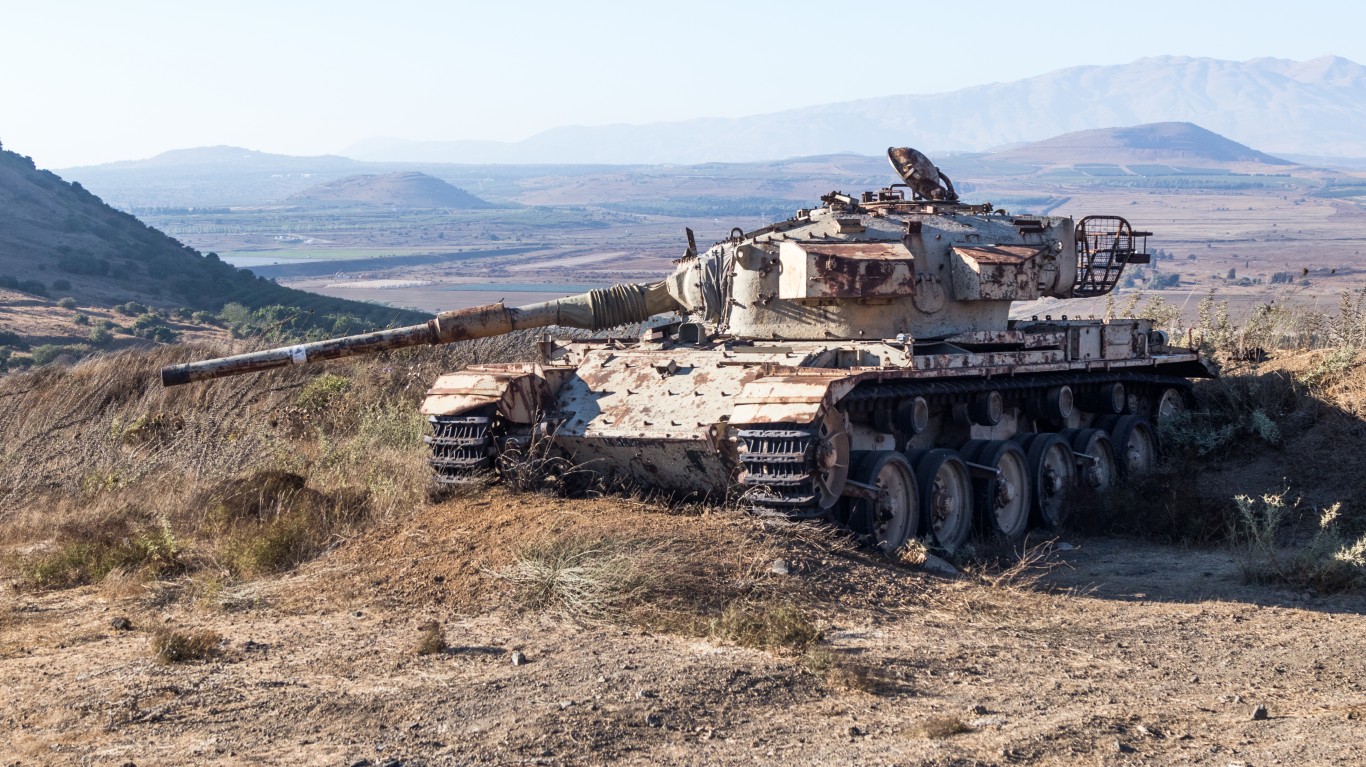
24. Yom Kippur War
> Date: Oct. 6, 1973
> Location: Israel
> Combatants: Israel, Egypt and Syria
Smarting from the humiliating defeat during the Six-Day War in 1967, Egypt and Syria plotted revenge against Israel to win back the territory it had lost. On Oct. 6, 1973, Egyptian and Syrian forces launched a coordinated attack against Israel on Yom Kippur, the holiest day in the Jewish calendar, with many Israeli soldiers away from their posts to observe the day of atonement.
Egyptian troops armed with up-to-date Soviet weapons pushed deep into the Sinai Peninsula, while Syria tried to expel Israeli troops from the Golan Heights. Israel counterattacked and recaptured the Golan Heights. A cease-fire went into effect on Oct. 25, 1973.
Even though Egypt had been defeated, Egyptian president Anwar Sadat’s prestige grew because of Egypt’s initial success. Sadat used that prestige to forge the first peace accord between Israel and its Arab neighbors. Other Arab nations ostracized Sadat, and his peace overtures with Israel eventually led to his assassination.

25. World Trade Center attack
> Date: Sept. 11, 2001
> Location: New York City
> Combatants: United States, al-Qaeda
On Sept.11, 2001, 19 Islamic militants associated with the extremist group al-Qaeda hijacked four airliners and carried out suicide attacks against targets in the United States. Two of the planes hit the twin towers of the World Trade Center in New York City and destroyed them; a third plane slammed into the Pentagon in Arlington, Va.; a fourth plane, believed bound for Washington, D.C., crashed in a field in Shanksville, Pennsylvania, after passengers overpowered the hijackers. Almost 3,000 people were killed during the attacks.
Although America had been hit by terrorist attacks before, the events on 9/11 were considered acts of war. In October, America and its allies launched Operation Enduring Freedom to oust the Taliban regime in Afghanistan, where the terrorist attacks were planned, and destroy Osama bin Laden’s terrorist network based there. The Taliban were removed from power within two months, but an insurgency in Afghanistan continued for many years afterward, and the Taliban retook the country in 2021 after the final departure of American troops.


